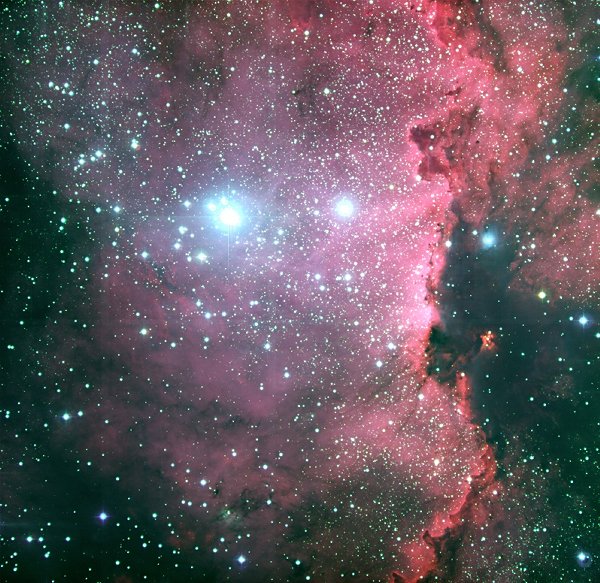Astronomy Extra Credit
41)
Is There Anybody Out There? – The Drake Formula & SETI
Everyone has
always wanted an answer the question, “Is there anybody out there?” As
our society grows and our technology advances, it seems more and more probable
that were aren’t alone in the universe. Many astronomers have tried to
answer different aspects of this question. First there was Dr. Frank Drake
who, in 1961,wrote an equation to estimate the number of civilizations
in our galaxy that would be able to contact each other. This formula has
become known as the Drake Formula:
N = R*
× fp × ne × fl ×
fi × fc × L
Where,
N
= The number of communicative civilizations; R*= The
rate of formation of suitable
stars. (Stars with a large enough "habitable zone" and long
enough lifetime to be suitable for the development of intelligent life.); fp= The
fraction of these stars with planets;ne= The
number of planets per solar system that are suitable for life to survive.
(Those planets that have Earth-like atmospheres.); fl= The
fraction of those planets where life develops; fi= The
fraction life that actually develops intelligence; fc
= The fraction of the intelligent
species that choose to communicate with other civilizations, and develop
the adequate technology to do so; L= The
lifetime of these communicating civilizations.
The Drake Formula requires one to answer
many questions, and make a lot of assumptions in order to calculate an
actual probability of the existence of intelligent life. Since there is
such tremendous guesswork involved, the real importance of this formula
is found in just thinking about the questions that each variable raises.
The more that we learn about our universe will enable us to make more educated
guesses and perhaps one day have enough information to calculate a realistic
probability.

The next step in the search
for life was a program called SETI (search for extraterrestrial life).
There are currently several different SETI searches under way. Most of
them follow the same basic strategy. They search through various parts
of the microwave radio spectrum for any extremely narrow banded, single
frequency signals originating beyond our solar system. Astronomers figured
that these single frequency signals would have the best chances of being
detected across the galaxy, with the lest amount of background noise. We
also try to listen to areas where it is most probable that there could
be life. We listen for a “beacon” sound would be more like an “I’m here”
kind of sound, verses trying to pick up actual communications radio signals.
After over 20 years of searching
nothing unusual has ever been detected, but we've really only begun to
scratch the surface. There are an estimated 100 billion stars in the Milky
Way galaxy alone. To complicate matters further there are millions of frequencies
that a signal could be received on. It may be that we just haven't looked
in the right place at the right time. Yet, it is also conceivable that
we will never find anything unusual. It is possible that we are the only
intelligent life in the universe, but this theory just seems way too unlikely
to be true. With all the billions of stars out there is seems close to
impossible to think that we are the only life that has ever evolved. All
the SETI projects we are just trying to find us an answer to the question
that has undoubtedly run through everyone’s minds, “Is there anyone out
there?”
References:
1) www.seti-inst.edu
2) www.seds.org
3) www.mc.harvard.edu/seti
4) www.activemind.com/mysterious/topics/seti
5) Pasachoff, Jay. Astronomy:
From
the Earth to the Universe. Saunders Publishing Co. 1998
